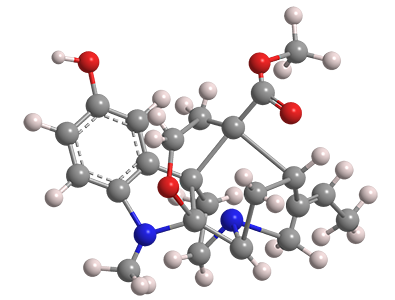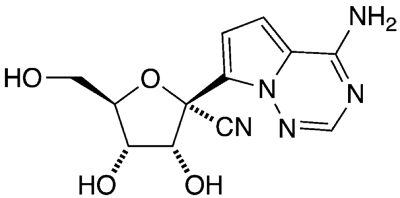What molecule am I?


Akuammine, also known as vincamajoridine, is an indole alkaloid found in the seeds of the akuamma tree (Picralima nitida) that grows in several central African countries. Its alternative name results from its presence in Vinca major, the periwinkle vine that is native to the western Mediterranean.
In 1927, Thomas Anderson Henry* and Thomas Marvel Sharp at the Wellcome Research Laboratories (Beckenham, UK) were the first to isolate akuammine from P. nitida (then called P. klaineana). Later, in 1955, Maurice-Marie Janot and co-workers at the Institute of the Chemistry of Natural Substances (Gif-sur-Yvette, France) showed that the alkaloids isolated from P. nitida and V. major are identical.
P. nitida seeds have been used in traditional medicine to treat pain and fever. Akuammine itself has pharmacological properties, such as antimalarial activity.
This year, a study conducted by Andrew P. Riley at the University of Illinois at Chicago, Richard M. van Rijn, at Purdue University (West Lafayette, IN), and their colleagues showed that akuammine and three similar alkaloids isolated from P. nitida primarily target opioid receptors in the central nervous system of mice. The authors concluded that “their opioid-preferring activity . . . suggest[s] the akuamma alkaloids provide distinct scaffolds from which novel opioids with unique pharmacologic properties and therapeutic utility can be developed.”
No hazard information for akuammine was available at the time of this writing.

A current “holy grail” of medicinal scientists is to create an oral medication for COVID-19 patients. Early in the pandemic, the Ebola drug remdesivir from Gilead Sciences (Foster City, CA) was thought to have some benefits and was granted emergency use authorization by the US Food and Drug Administration. But in September 2020, the World Health Organization declared that remdesivir showed no evidence of efficacy and discouraged its use.
But remdesivir isn’t out of the COVID-19 picture yet. Gilead has an inhaled version of the drug in Phase 1 trials; and its scientists are working on an oral version. Their strategy is to make derivatives of the core structure of remdesivir, GS-4415241 (see image), that are more likely to be orally available. Watch this space.
MOTF update:
June 28, 2021
GS-441524 is the core structure of Gilead Science’s remdesivir. A letter published in Chemical & Engineering News on the same date cites efforts to bring GS-441524 to clinic in 2020. It thus appears that GS-441524 has a past as well as a future.
Molecule of the Future
Once a month we bring you a newly discovered or developed molecule that has important implications for the future of chemistry or society in general. Look for it the third week of each month. Learn more about this month's Molecule of the Future below.
We're looking for more molecules of the future!
Do you have a suggestion for the next molecule of the future? Send your idea to MOTW.
Akuammine fast facts
| CAS Reg. No. | 3512-87-6 |
| SciFinder nomenclature | 2H,12H-12a,2,7a-(Epoxyethanylyl- idene)-indolo- [2,3-a]-quinol- izine-15-carboxylic acid, 3-ethylidene-1,3,4,6,7,12b- hexahydro-9- hydroxy-12-methyl-, methyl ester, (2S,3E,7aS,12aS, 12bS,15R)- |
| Empirical formula | C22H26N2O4 |
| Molar mass | 382.45 g/mol |
| Appearance | White crystals |
| Melting point | 255 ºCa (dec) |
| Water solubility | Slight |
a. Literature values range from 225 °C to 316 °C.

Learn more about this molecule from CAS, the most authoritative and comprehensive source for chemical information.
Molecule of the Week needs your suggestions!
If your favorite molecule is not in our archive, please send us a message. The molecule can be notable for its current or historical importance or for any quirky reason. Thank you!
Stay Ahead of the Chemistry Curve
Learn how ACS can help you stay ahead in the world of chemistry.

